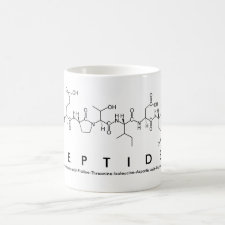
Authors: Gao JG, Zhou J, Qu XJ
Article Title: Characteristics of molecular recognition of plant hormone H-1-indole-3-acetic acid molecular template polymer.
Publication date: 2003
Journal: Chinese Journal of Analytical Chemistry
Volume: 31
Issue: (10)
Page numbers: 1173-1177.
Alternative URL: http://en.cnki.com.cn/Article_en/CJFDTotal-FXHX200310006.htm
Abstract: Using H-1-indole-3-acetic acid as template molecule and 4- vinylpyridine as functional monomer, a kind of new molecular template polymer was prepared by self-assembly molecular template technique. The binding mechanism and recognition ability of the molecular template polymer were explored by the ultraviolet spectrometry, the scatchard analysis, the effect of dielectric constant of media and the experiments of analyte selectivity. These results indicated that there were two different classes of binding sites in this polymer, one being the selectively binding sites resulting from template self- assembly based on ionic interaction, the other being non- selectively binding sites resulting from hydrophobic interaction, whose disassociation constants are K-D1 = 8.1 x 10(-4) mol/L and K-D2 = 2.5 x 10(-2) mol/L, respectively. The polymer shows high selectivity for target molecule H-1-indole- 3-acetic acid in acetonitrile and some of other organic solvents. However, it does not show selectivity in water because non-selectively hydrophobic interaction in this polymer is much stronger than ionic interaction under the conditions. It is predicted that the polymer may be used in the enrichment and determination of trace H-1-indole acetic acid from complex plant samples as a selective adsorption material
Template and target information: 1H-indole-3-acetic acid



Join the Society for Molecular Imprinting

New items RSS feed
Sign-up for e-mail updates:
Choose between receiving an occasional newsletter or more frequent e-mail alerts.
Click here to go to the sign-up page.
Is your name elemental or peptidic? Enter your name and find out by clicking either of the buttons below!
Other products you may like:
 MIPdatabase
MIPdatabase









